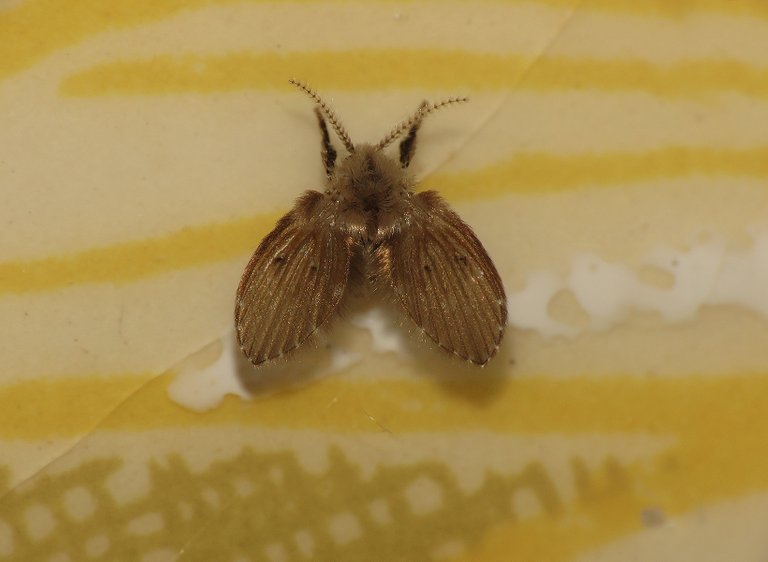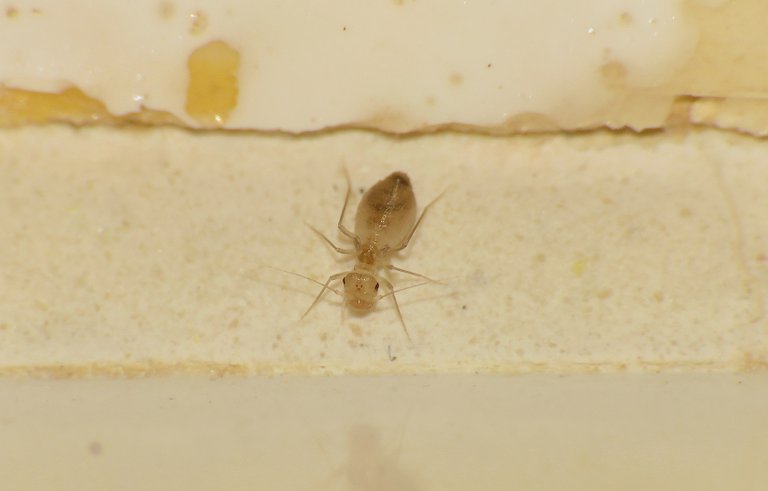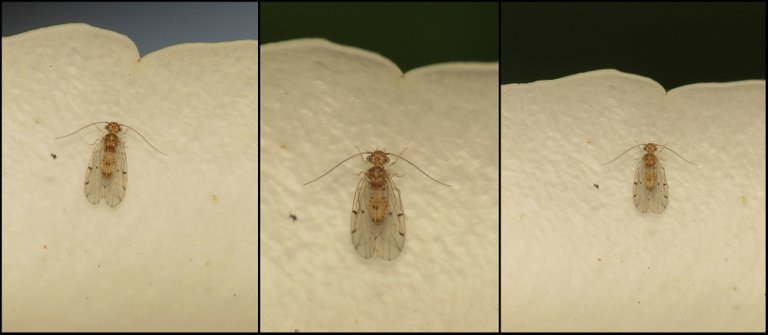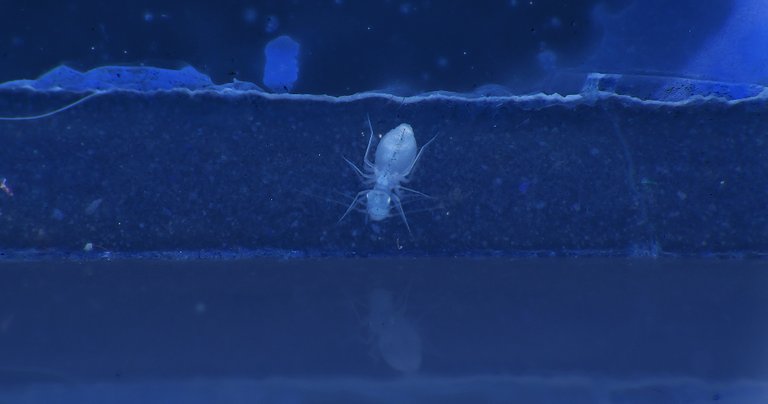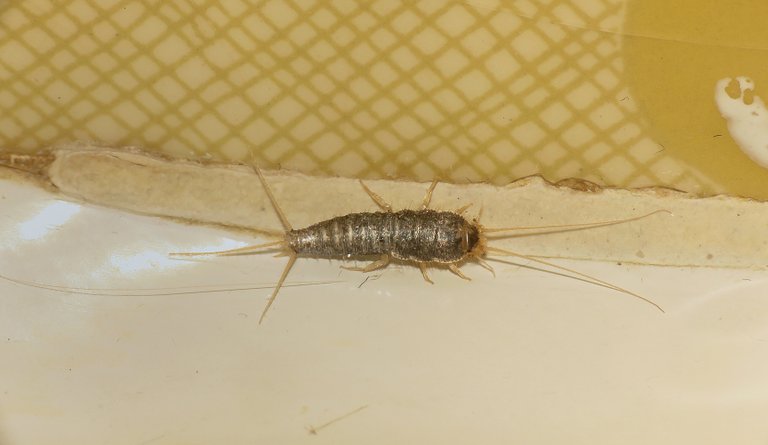Sometimes I don't need to go far to find something interesting to observe through the macro lens. An extremely short walk from my room to the bathroom at the end of the hallway was more than enough last night.
In this post, you'll see three interesting species I encountered there. This is the first one. It looks like a moth but it's actually a fly. A small fly from the Psychodidae family. Clogmia albipunctata, the fly shown in this photograph, is commonly known as the bathroom moth midge, bathroom moth fly, or drain fly.
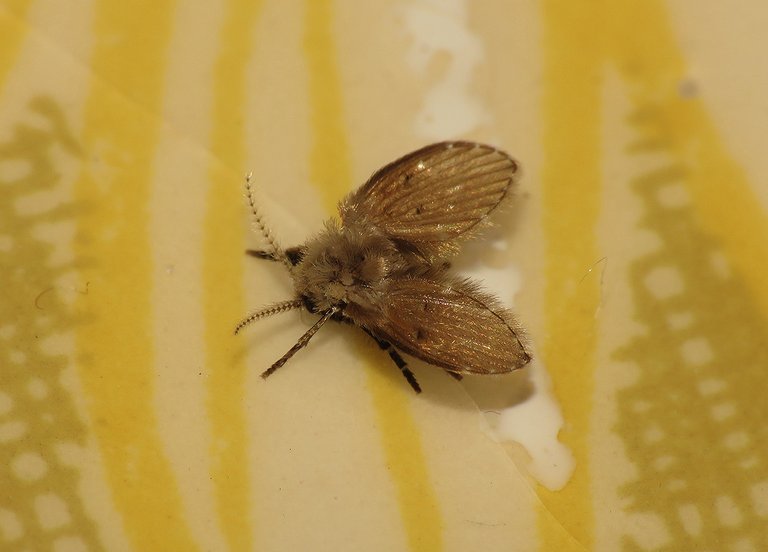
The adults can sustain themselves by drinking water, and not much else. If there is a chance they will consume nectar or any kind of sugary liquid found in or around human habitations. As adults, they live only about 12 days and spend most of their short life perched on walls.
The larvae live in aquatic environments, feeding on all kinds of decaying organic matter. It takes about 18 days for the larva to turn into a pupa, which after 5 days, develops into an adult. They often infest the drains of bathrooms, because those drains suit their lifestyle perfectly.
Today, early in the morning, while preparing the photographs for this post, I felt inspired to take the insects and make some artsy stuff with them in Photoshop.
In this triptych, you can see some Clogmia albipunctata variations.
Clogmia albipunctata is a very small insect but compared to the creature shown in the following photograph ...
... it looks like a giant. This is the Psyllipsocus ramburii, a barklouse from the Psyllipsocidae family. This minuscule insect is polymorphic. Brachypterous (which means with reduced, non - functional wings), pale, almost blind forms occur in drains and caves, and winged or brachypterous, pigmented forms with larger eyes can be seen in houses, gardens, and various open spaces. In the following triptych ...
... you can see the form with well-developed, very functional wings. These three photographs were taken three or four months ago, on the roses in my yard.
According to some Internet sources, wing development in this species appears to be affected by population density and temperature conditions.
This simple Photoshop edit gives a bit of mystery to the scene. This was my first encounter with brachypterous Psyllipsocus ramburii. I probably never noticed it before because is so extremely small. Last night, I was photographing another, still very small but a much bigger insect, when this barklouse jumped into the scene, right in front of my macro lens. I'm pretty sure that I wouldn't notice it with the naked eye. In the following photograph, you'll see the bigger insect mentioned before.

This is the Lepisma saccharinum, a very common bathroom creature commonly known as the silverfish.
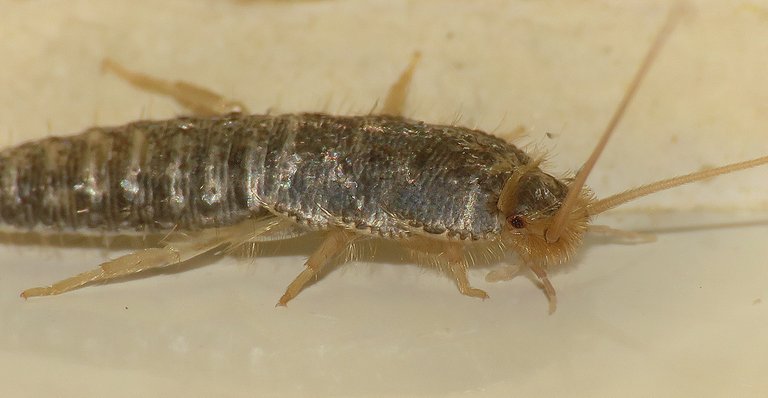
Here you can take a better, more up-close look at its cute face. 😀
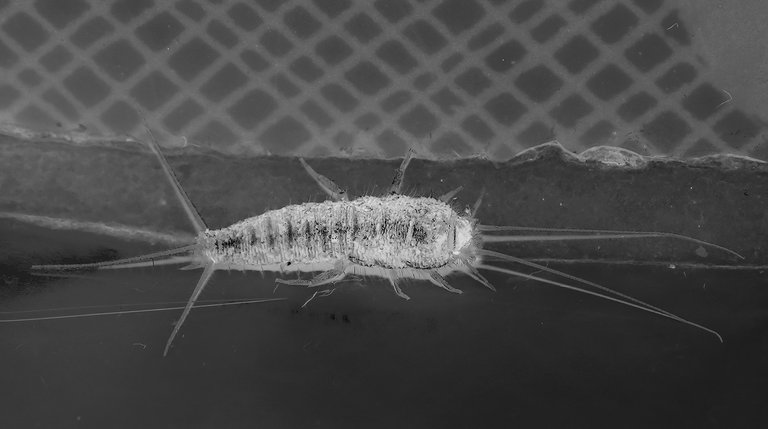
In this simple monochrome edit with an invert option, the silverfish has a slightly Kafkian, unpleasant look.
Lepisma saccharinum is a primitive, wingless insect in the order Zygentoma.
The predecessors of silverfish, along with those of jumping bristletails, are considered the earliest and most primitive insects. They evolved at the latest in mid-Devonian and possibly as early as late Silurian more than 400 million years ago.

These are very resilient, highly adaptable animals that can thrive on a wide variety of food. Thanks to the cellulase produced by their midgut, they are able to digest cellulose without the help of bacteria, fungi, or protozoa. Silverfish consume matter that contains polysaccharides, such as starches and dextrin in adhesives. These include book bindings, carpet, clothing, coffee, dandruff, glue, hair, some paints, paper, photos, plaster, and sugar. They will damage wallpaper in order to consume the paste. Lepisma saccharinum can also cause damage to tapestries. Furthermore, these insects may eat cotton, dead insects, linen, silk, leftover crumbs, or their own molted exoskeleton. During the famine, a silverfish may even consume leather and synthetic fabrics. Silverfish can live for a year or more without eating if water is available.
The following links will take you to the sites with more information about the protagonists of this post. I found some stuff about them there.
https://en.wikipedia.org/wiki/Clogmia_albipunctata
https://anic.csiro.au/insectfamilies/biota_details.aspx?OrderID=42512&BiotaID=43654&PageID=families
https://en.wikipedia.org/wiki/Psyllipsocus_ramburii
https://bugguide.net/node/view/1410370
https://en.wikipedia.org/wiki/Silverfish
AND THAT'S IT. HOPE YOU ENJOYED THIS BATHROOM SAFARI. AS ALWAYS HERE ON HIVE, THE PHOTOGRAPHS ARE MY WORK.
